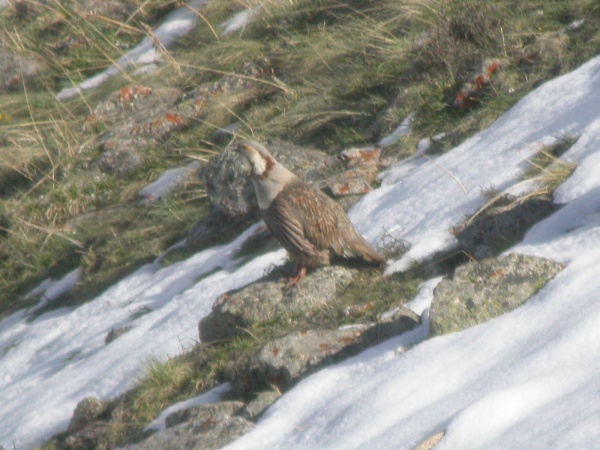Facts About Himalayan snowcock
The Himalayan snowcock is a large bird belonging to the pheasant family, Phasianidae. It inhabits the Himalayan and Pamir mountain ranges of Asia, thriving in alpine pastures and rocky cliffs. Notably, the bird was introduced to Nevada's Ruby Mountains in the 1960s, where it now sustains a flourishing wild population.
This bird bears a resemblance to a sizable gray partridge, characterized by distinctive grey upper parts, a white throat, and chestnut markings. Males possess a tarsal spur, making them easily distinguishable from females. During flight, their striking white primaries and reddish outer tail feathers are especially noticeable.
Several subspecies of the Himalayan snowcock exist, including incognitus, sewerzowi, grombczewskii, and koslowi, each adapted to different geographic areas. These birds predominantly inhabit alpine regions above the treeline but descend to lower elevations during harsh winters. Due to a stable population, the IUCN classifies them as of "least concern."
Himalayan snowcocks are social birds that feed on grass, berries, and seeds. They exhibit intriguing behaviors, such as flying downhill to drink water and vocalizing during the breeding season. Breeding occurs in the summer, with nests constructed in ground scrapes under rocks or bushes. Females incubate the eggs while males maintain vigilance nearby.
These birds face threats from predators like golden eagles and parasites such as Acanthocephala and Nematoda. Their behaviors, diet, and breeding habits are well-suited to their alpine environment. Living in flocks helps them remain vigilant against predators and forage more efficiently.

 Sri Lanka
Sri Lanka